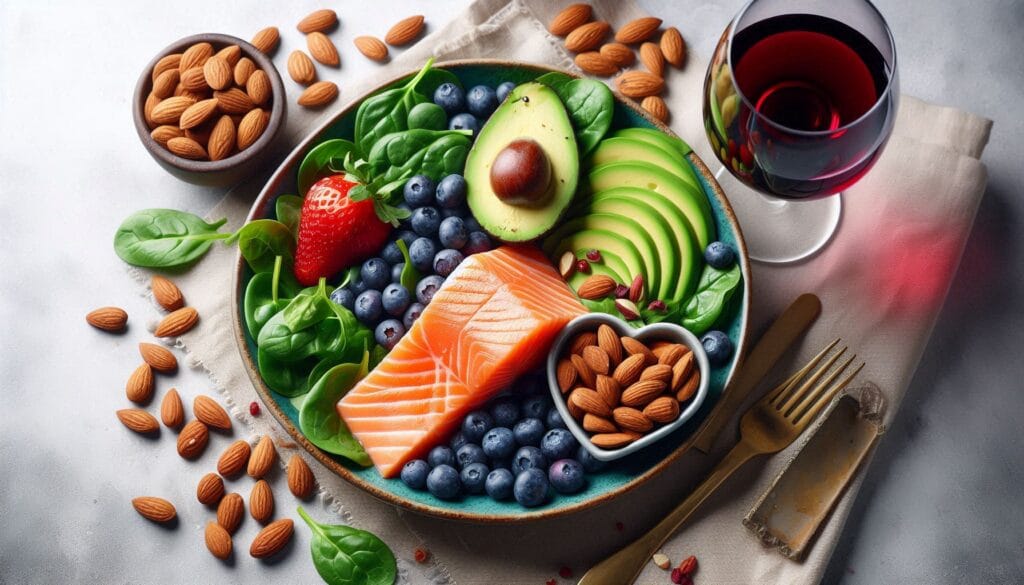
Heart disease might sound like a daunting issue, but the truth is, you can take simple steps every day to lower your risk. The food you eat plays a massive role in your heart’s health. But the good news? You don’t need a complete overhaul of your diet to make a difference. By tweaking a few things here and there, you can start protecting your heart today. Ready to find out how? Let’s dive into these seven easy diet changes that can help you stay heart-healthy!
Introduction
When it comes to heart disease, prevention is key. And diet is one of the most powerful tools at your disposal. The foods you choose (or don’t choose) can either help keep your heart strong or increase your risk of heart problems. Fortunately, making heart-healthy food choices doesn’t have to be complicated or extreme. You can make some pretty simple changes starting today that will have long-term benefits for your cardiovascular system. Let’s walk through seven of the easiest and most impactful adjustments you can make to your diet to start lowering your heart disease risk immediately.
Why Diet is Crucial for Heart Health
Understanding Heart Disease
Heart disease, also known as cardiovascular disease, refers to a range of conditions that affect the heart and blood vessels, often leading to heart attacks or strokes. Factors like high blood pressure, cholesterol levels, and obesity play a major role, and the food we consume directly impacts all of these. By making mindful food choices, you can reduce these risk factors and help protect your heart.
The Role of Nutrition in Heart Health
Nutrition is more than just counting calories. It’s about providing your body with the nutrients it needs to function at its best. When it comes to heart health, certain nutrients (like fiber, omega-3s, and antioxidants) have been shown to lower the risk of heart disease, while others (like saturated fats and excess sodium) can increase it. By choosing the right foods, you’re giving your heart a fighting chance.
1. Cut Down on Saturated and Trans Fats
Let’s be real—fats are everywhere, but not all fats are created equal. Saturated and trans fats are the villains here. They sneak into your arteries and cause blockages, leading to heart issues. Think about the greasy burgers, fries, and processed snacks you might love—they’re full of these bad fats. But don’t worry, you don’t have to give up all the good stuff! Swap those fatty meats and deep-fried goodies for leaner proteins like chicken or fish, and cook with heart-friendly oils like olive oil or avocado oil instead. It’s an easy fix that doesn’t sacrifice flavor.
Choosing Healthy Oils
Olive oil, avocado oil, and even a sprinkle of flaxseed oil can make all the difference. Ditch the butter for these healthier fats and see the benefits add up!
2. Increase Fiber Intake
Fiber is like a broom that sweeps out the bad cholesterol before it has a chance to cause trouble. You want more of it in your diet, and it’s not hard to find. Foods like oatmeal, beans, and fruits (think apples, pears, and berries) are packed with fiber. They keep your heart happy and your tummy full! Plus, they taste great. Start by adding some oats to your breakfast or swapping out regular pasta for whole grain. Easy-peasy, right?
Top High-Fiber Foods
Fill up your plate with beans, lentils, whole grains, and fruits for a fiber boost. Trust me, your heart will love it!
3. Eat More Fruits and Vegetables

You’ve probably heard it a million times, but there’s a reason people rave about fruits and veggies—they’re loaded with antioxidants and nutrients that keep your heart strong. Aim for a colorful plate. It doesn’t have to be boring; throw some berries in your yogurt or stir-fry some peppers and spinach with your dinner. When you think about it, the more color, the better for your heart (and Instagram feed)!
Easy Ways to Add More Produce
Toss some berries into your cereal or add a handful of spinach to your smoothie. You’ll barely notice, but your heart sure will!
4. Choose Whole Grains Over Refined Grains
Whole grains are the superheroes of the grain world. Unlike their refined cousins, they still have all the good stuff—fiber, vitamins, and minerals. Refined grains, like white bread and white rice, lose a lot of their nutrients during processing. So, make a simple swap. Go for whole wheat bread, brown rice, or quinoa instead. You won’t even miss the white stuff once you get used to these delicious and hearty options.
Simple Swaps
Switch out white rice for brown, and opt for whole wheat pasta instead of regular. Small swaps can make a big difference.
5. Reduce Salt Intake
Salt might make your food taste better, but too much of it is a recipe for high blood pressure. And we all know that high blood pressure isn’t good news for your heart. Here’s the thing: most of the salt you eat is hidden in processed foods like chips, canned soups, and even bread. Try seasoning your meals with herbs and spices instead of always reaching for the salt shaker. Trust me, after a while, you won’t even notice the difference—and your heart will thank you!
Tips for Cutting Back
Check food labels for hidden sodium and go for low-sodium versions of your favorites. Simple changes like this can pay off!
6. Include More Omega-3 Fatty Acids
Omega-3s are like little heart protectors. They help reduce inflammation and lower your triglyceride levels, which are both important for heart health. Fatty fish like salmon, mackerel, and sardines are packed with omega-3s. If you’re not big on fish, no worries—you can get omega-3s from plant sources too, like chia seeds, flaxseeds, and walnuts. Try tossing some into your smoothies or sprinkling them on your salad.
Best Sources of Omega-3s
If fish isn’t your thing, chia seeds, flaxseeds, and walnuts are fantastic plant-based sources of omega-3s.
7. Watch Your Portion Sizes

Even if you’re eating all the right foods, eating too much can still cause problems. Overeating, even the good stuff, can lead to weight gain and put extra stress on your heart. So, keep an eye on those portion sizes. A great tip is to use smaller plates so you don’t accidentally pile on too much food. Eat slowly, enjoy your meal, and stop when you’re full—your heart and waistline will be grateful.
Mindful Eating
Take your time with meals. Savor every bite and listen to your body. When you’re full, stop eating!
Closing Thoughts
Making changes to your diet doesn’t have to be difficult or overwhelming. By incorporating these seven simple tweaks, you’re not just lowering your heart disease risk—you’re also setting yourself up for a healthier, happier future. Remember, small changes add up over time, so don’t underestimate the power of a little adjustment here and there. Your heart will thank you!
FAQs
Q: How quickly can diet changes affect heart health?
While you won’t see changes overnight, many people start to notice improvements in their cholesterol levels, blood pressure, and overall heart health within a few weeks to a few months of making dietary changes.
Q: Can I still eat red meat if I’m trying to lower my heart disease risk?
Red meat can be high in saturated fats, so it’s best to limit it. If you do eat red meat, choose lean cuts and eat them in moderation.
Q: How much fiber should I eat daily for heart health?
Aim for 25-30 grams of fiber each day.
Q: Are all fats bad for heart health?
No! Healthy fats like those found in olive oil and avocados are great for your heart.
Q: What are some easy ways to reduce my salt intake?
Try using herbs and spices for flavor, and check food labels for hidden sodium.


